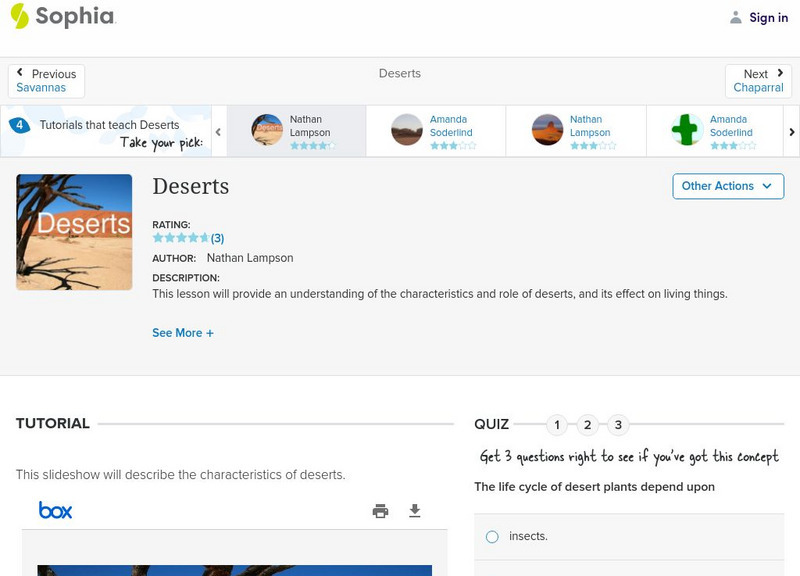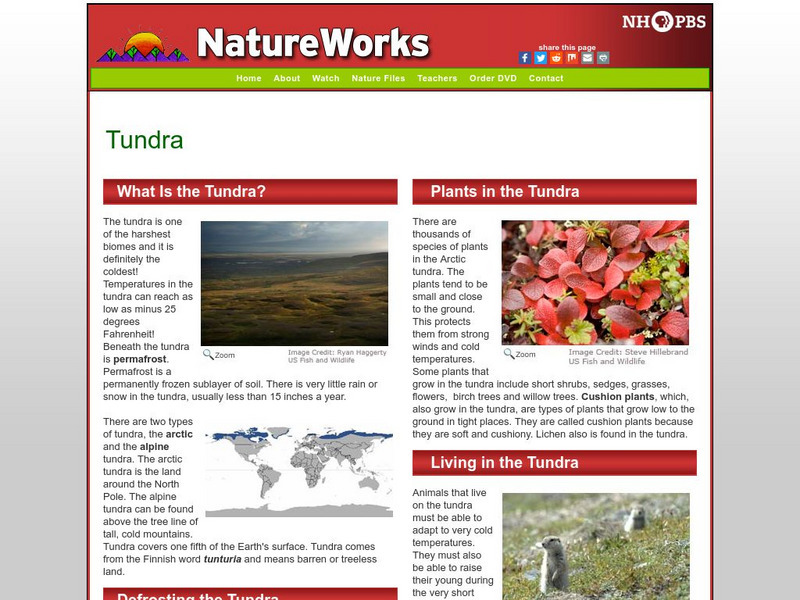Ducksters
Ducksters: Science for Kids: Coral Reef Biome
Kids learn about the coral reef biome. Much of ocean life lives in this important aquatic ecosystem.
Ducksters
Ducksters: Science for Kids: Tropical Rainforest Biome
Kids learn about the tropical rainforest biome. This diverse ecosystem produces much of the Earth's biodiversity.
Ducksters
Ducksters: Science for Kids: Savanna Grasslands Biome
Kids learn about the savanna grasslands biome. This tropical ecosystem is full of large herbivores like zebras, giraffes, and wildebeests.
Ducksters
Ducksters: Science for Kids: Tundra Biome
Kids learn about the tundra grasslands biome. This cold and dry ecosystem is located far to the north.
Ducksters
Ducksters: Science for Kids: Taiga Forest Biome
Kids learn about the taiga forest biome. The largest of the land biomes is known for its evergreen trees.
Ducksters
Ducksters: Science for Kids: Temperate Forest Biome
Kids learn about the temperate forest biome. Four distinct seasons and lots of trees.
Ducksters
Ducksters: Science for Kids: Grasslands Biome
Kids learn about the grasslands biome. Flat with few trees, these ecosystems feed much of the world.
The Environmental Literacy Council
Environmental Literacy Council: Ecosystems
Article explaining ecosystems and why we use them to organize our ideas about the natural world. Links to additional resources, maps, and activities.
Science Struck
Science Struck: Facts About Freshwater Biome
Describes the characteristics of a freshwater biome, the climate, and the animals and plants that live there.
Sophia Learning
Sophia: Freshwater Biomes: Lesson 2
This lesson will provide an understanding of the characteristics and role of freshwater biomes, and its effect on living things. It is 2 of 4 in the series titled "Freshwater Biomes."
Science Struck
Science Struck: Information About the Marine Biome
Describes the characteristics of the marine biome and the plants and animals that live there.
BiologyWise
Biology Wise: Freshwater Biome Plants
Brief overview of types of freshwater biomes and the plants that live in them, as well as adaptations that plants have made in order to survive there.
Science Education Resource Center at Carleton College
Serc: Our Big Backyard: How Does Our Local Ecosystem Change During the Year?
Get students observing the environment around their school with this activity. In this lab experiment, students keep a journal containing written observations and digital pictures of how local flora and fauna change during the school year.
Utah Education Network
Uen: Mini Ecosystems
Third graders will make small-scale environments and will describe interactions between living and nonliving things in their environments.
PBS
Nh Pbs: Nature Works: Rainforests
This resource offers a clear and concise picture of the rainforest biome. The content includes a look at the two different types of rainforests found in the world, animals that live in the rainforests, plants that grown in the rainforest...
ClassFlow
Class Flow: Ecosystems
[Free Registration/Login Required] This flipchart explores the different ecosystems of the world, enhanced by embedded videos showing both the landscape and the plants and animals that can be found there.
ClassFlow
Class Flow: Understanding Ecosystems
[Free Registration/Login Required] This flipchart will help students to learn about ecosystems and the living and nonliving things that interact in them.
ClassFlow
Class Flow: Understanding Ecosystems: Part 1 of 4
[Free Registration/Login Required] Students will get an introduction to ecosystems. They will be able to distinguish nonliving and living thins in a habitat.
ClassFlow
Class Flow: Energy in Ecosystems Habitat
[Free Registration/Login Required] This flipchart discusses the habitats in ecosystems.
ClassFlow
Class Flow: Ecosystems
[Free Registration/Login Required] A flipchart covering the concepts and ideas required to understand ecosystems, with particular concentration on the tropical rain forest.
PBS
Nh Pbs: Nature Works: Temperate Deciduous Forests
NatureWorks offers some fascinating information about the Temperate Deciduous Forests. Students and teachers will learn what makes these forests special, what animals live in this biome, what plants grow in this biome, and more.
Untamed Science
Untamed Science: Biology: World Biomes: Lakes and Ponds Biome
Learn about the biotic and abiotic factors of lakes and ponds as well as learning how lakes form through reading and video clips.
PBS
Nh Pbs: Nature Works: Tundra
Can you name the two types of tundra? Find the answer to this question and many more when you explore this educational resource. The content of this site includes a look at this biome's characteristics, plant life, animal life and more....






















